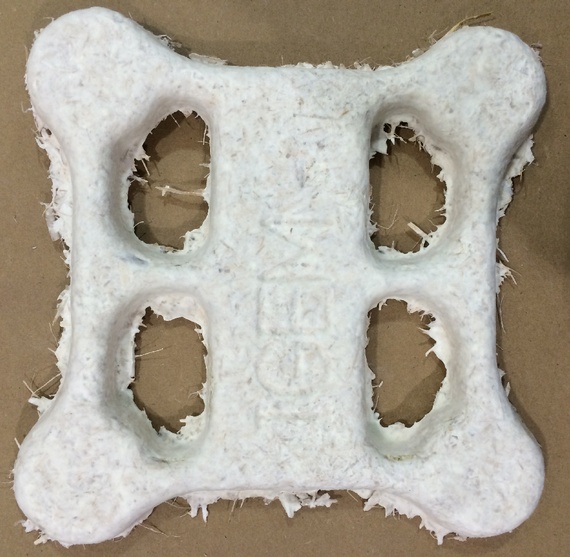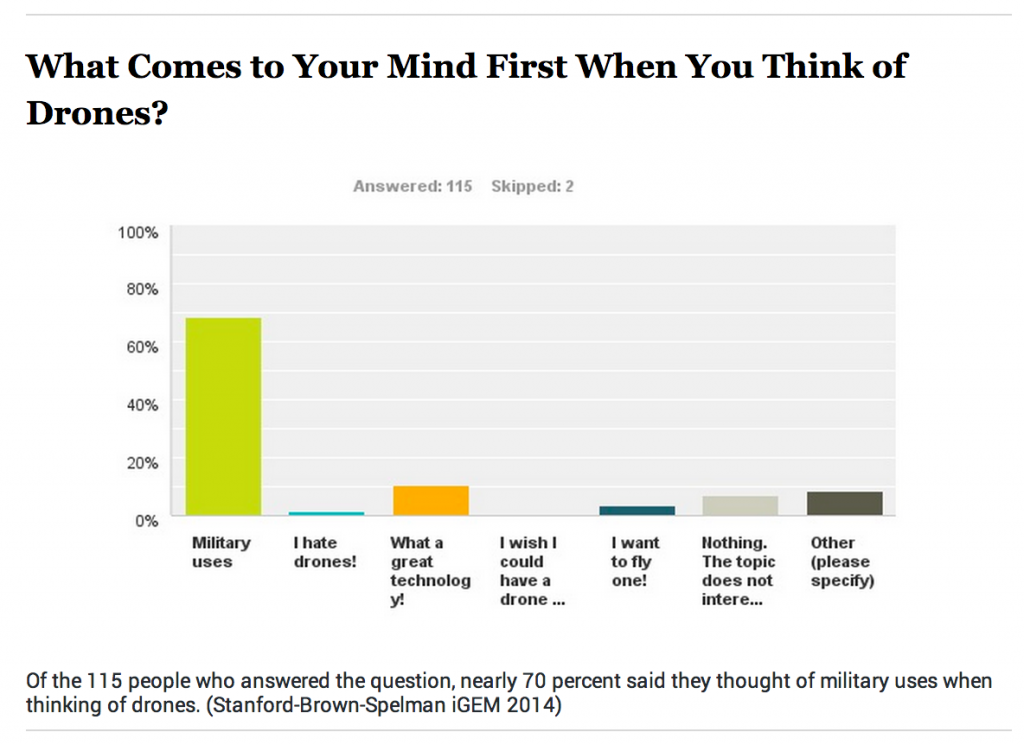(Source: The Atlantic)
 Drones are, largely, military tools—hardened, efficient machines of war. They’re sturdy, not fuzzy. Strong, not brittle. And they should definitely not start breaking down upon impact.
Drones are, largely, military tools—hardened, efficient machines of war. They’re sturdy, not fuzzy. Strong, not brittle. And they should definitely not start breaking down upon impact.
But breaking down is exactly what the bio-drone is supposed to do. Created—or rather, grown—by a team of 15 students from Stanford University, Brown University, and Spelman College for the 2014 iGEM competition, the biodegradable drone is made mostly of fibrous mycelium, a root-like material found in fungi. The lightweight and sustainable substance is then coated with a sheet of sticky bacteria-grown cellulose, while the circuits inside the drone are printed using silver nanoparticle ink.
These biodegradable parts together help the drone naturally decompose—a feature that struck me (and others) as useful for the military: If a drone doing surveillance or spying crashes, for example, it could decompose before an enemy could find it. But for all the military applications people sprang to, it turns out that this drone wasn’t designed with the military in mind. And making it work as a secretive, trace-free drone would be difficult.
For the biodegradable nature of the bio-drone to be useful to the military, the vehicle would need to decompose fairly quickly and leave little behind. According to Joseph Shih, a Stanford bioengineering lecturer and an advisor to the team, the current prototype would decompose slowly over a few months, though he says the team is working on developing an “active biodegradation system” that would make it do so in about four days.
But focusing on the speed of decomposing is beside the point, Lynn Rothschild, the lead scientist in synthetic biology at NASA’s Ames Research Center and another team advisor, tells me, because that’s not what they designed it for. “It had nothing to do with military implications,” she says. “Once you say the word ‘drone,’ people do think of sinister connotations. But this is not why we’re doing this.”
Continue Reading at TheAtlantic.com…
Alan is serial entrepreneur, active angel investor, and a drone enthusiast. He co-founded DRONELIFE.com to address the emerging commercial market for drones and drone technology. Prior to DRONELIFE.com, Alan co-founded Where.com, ThinkingScreen Media, and Nurse.com. Recently, Alan has co-founded Crowditz.com, a leader in Equity Crowdfunding Data, Analytics, and Insights. Alan can be reached at alan(at)dronelife.com









Leave a Reply